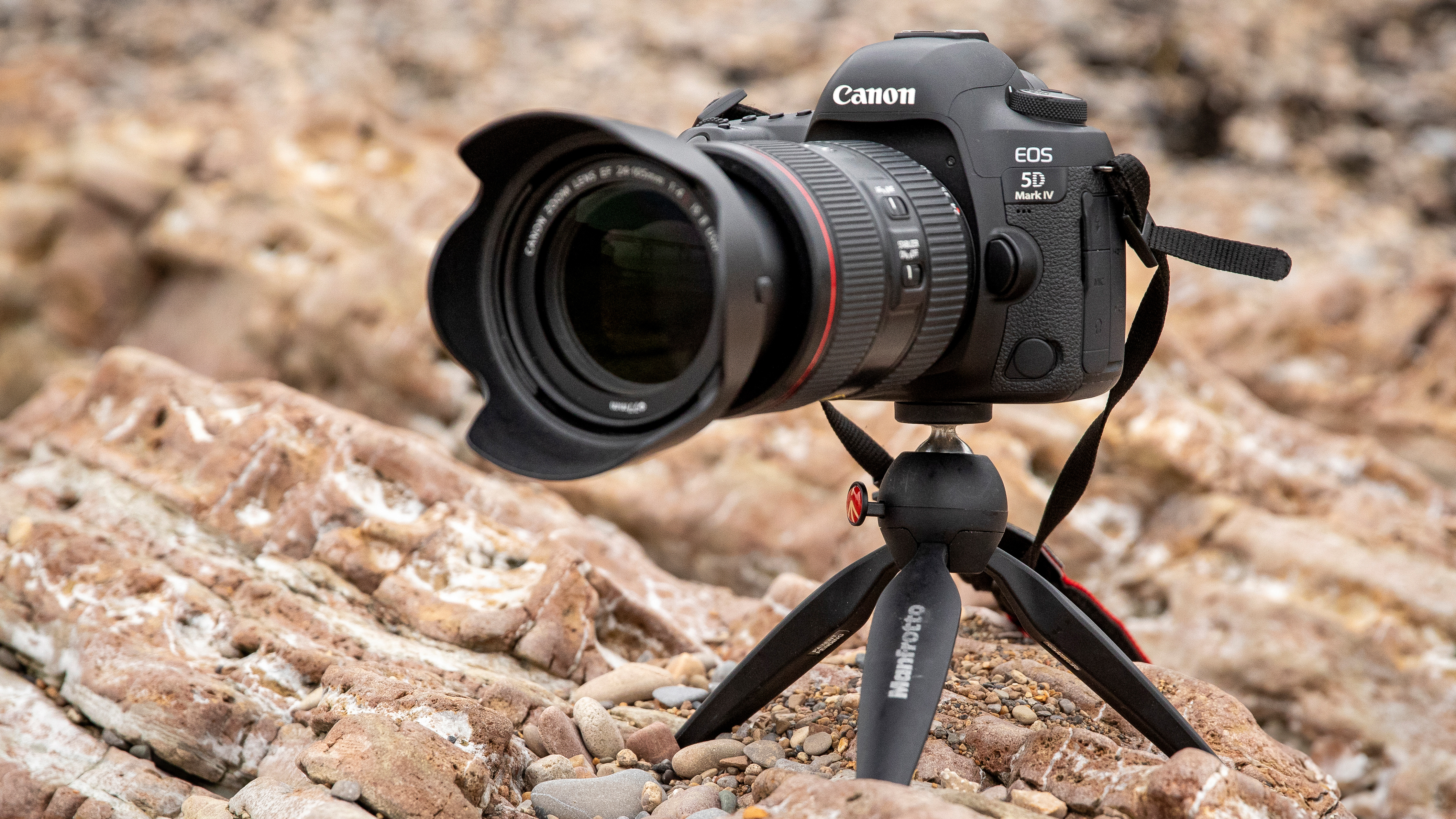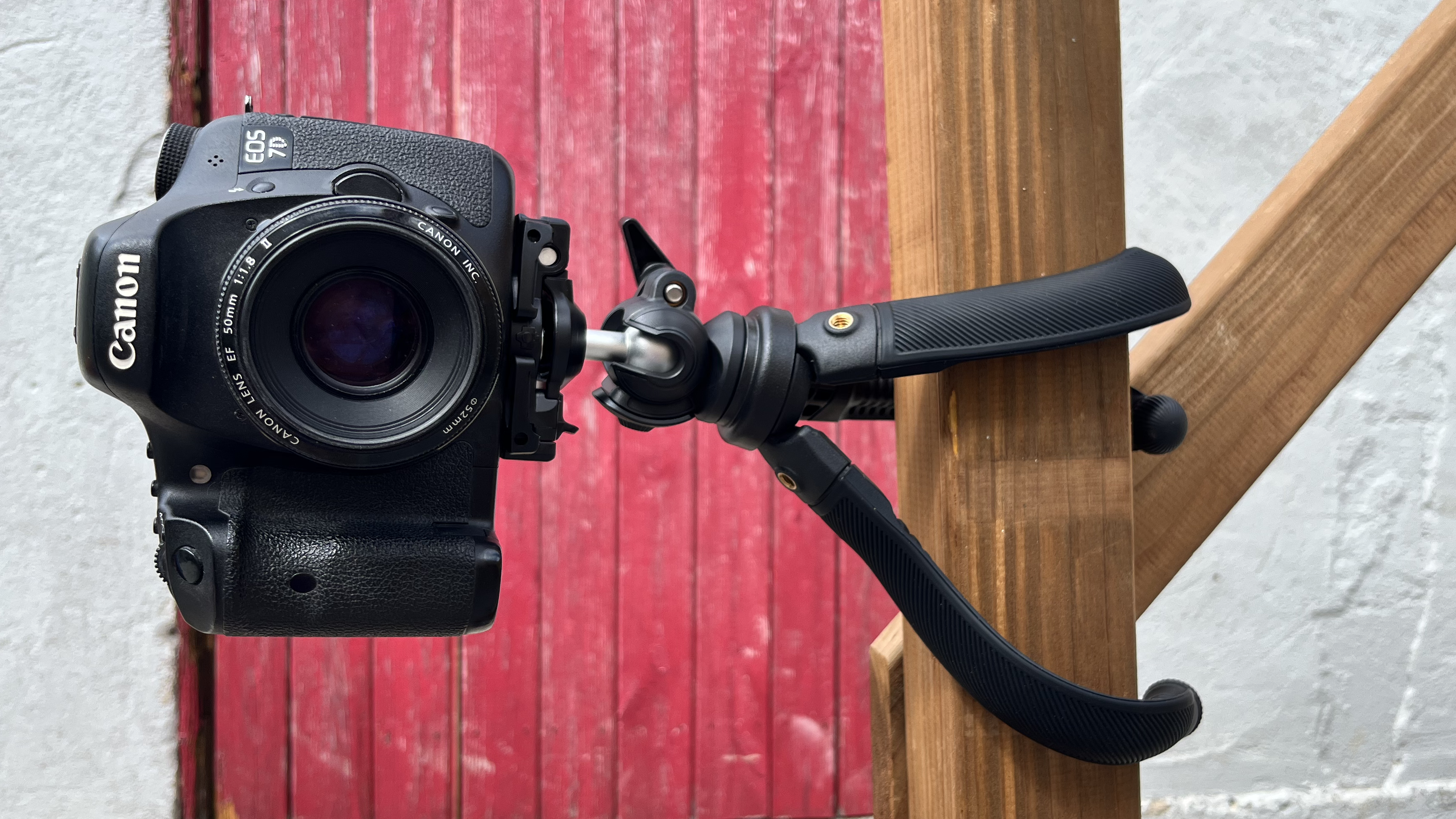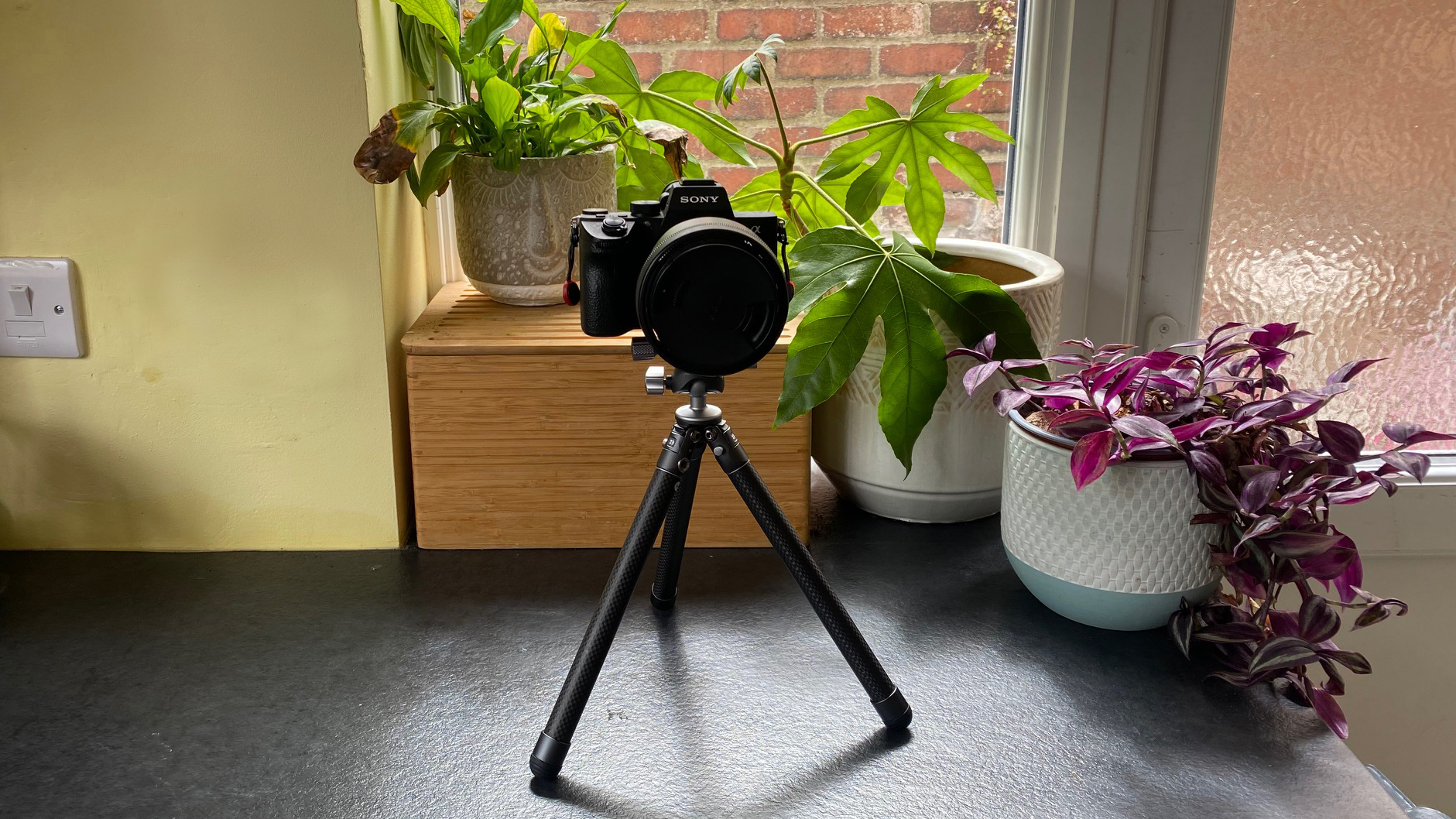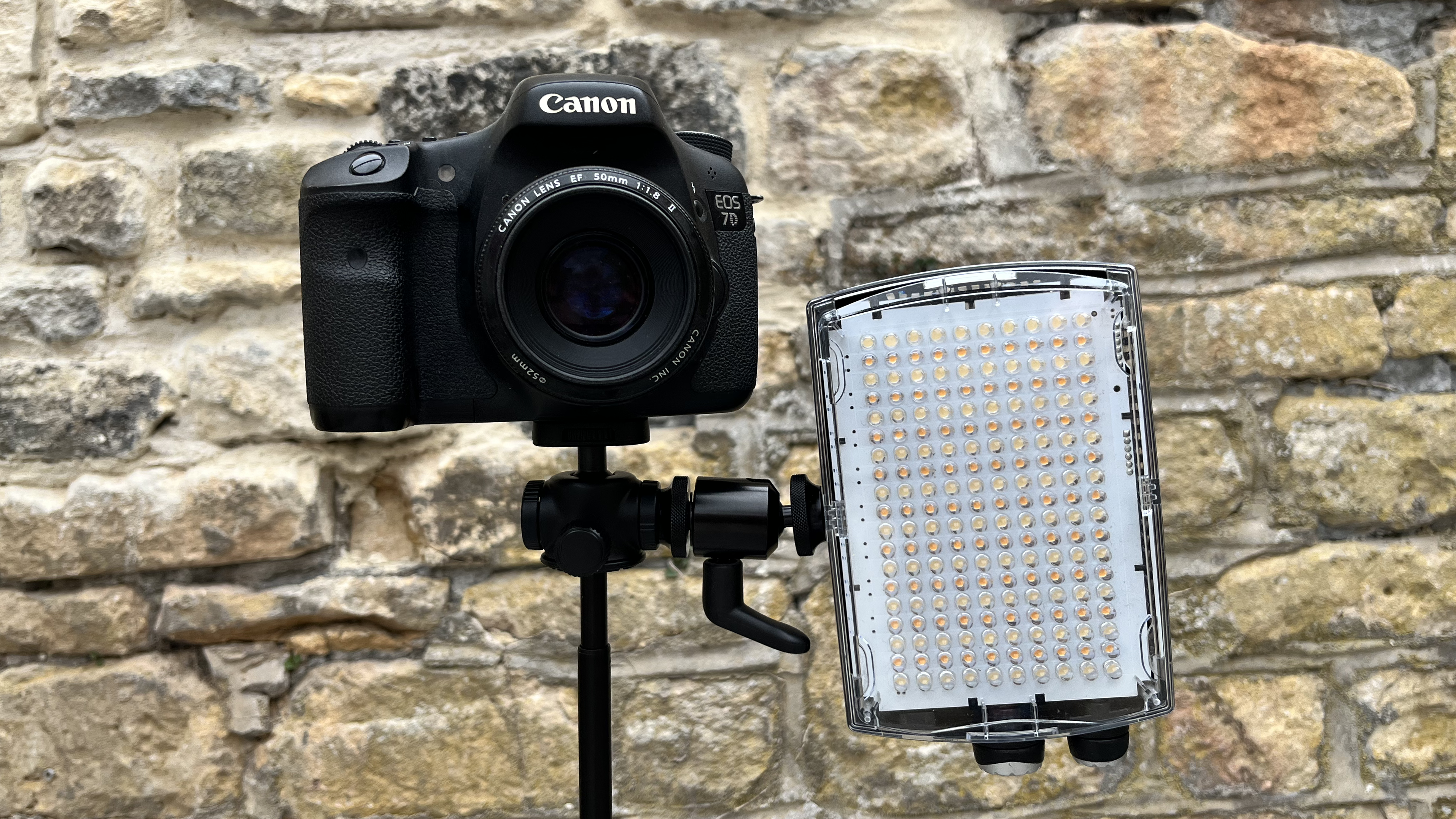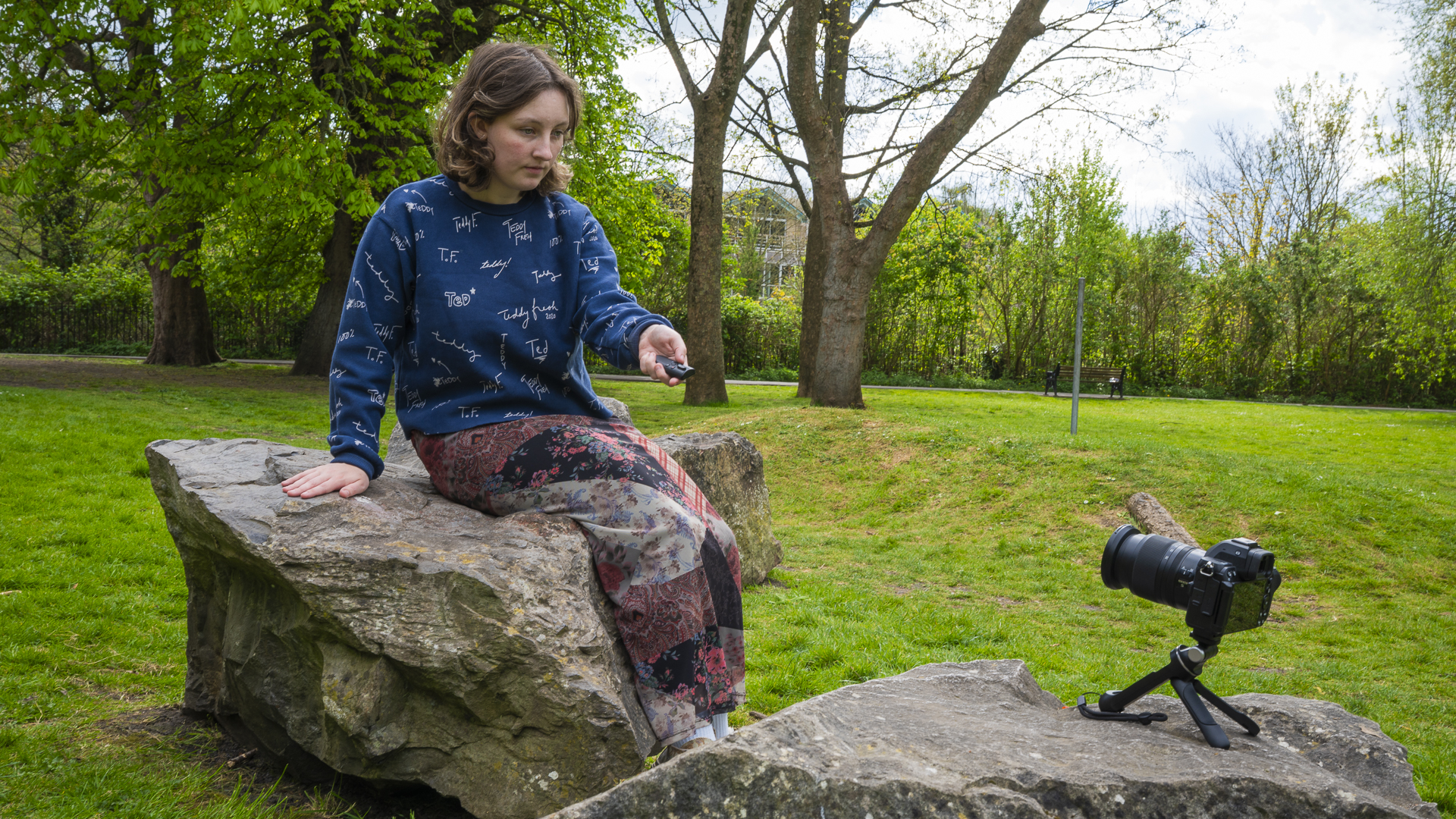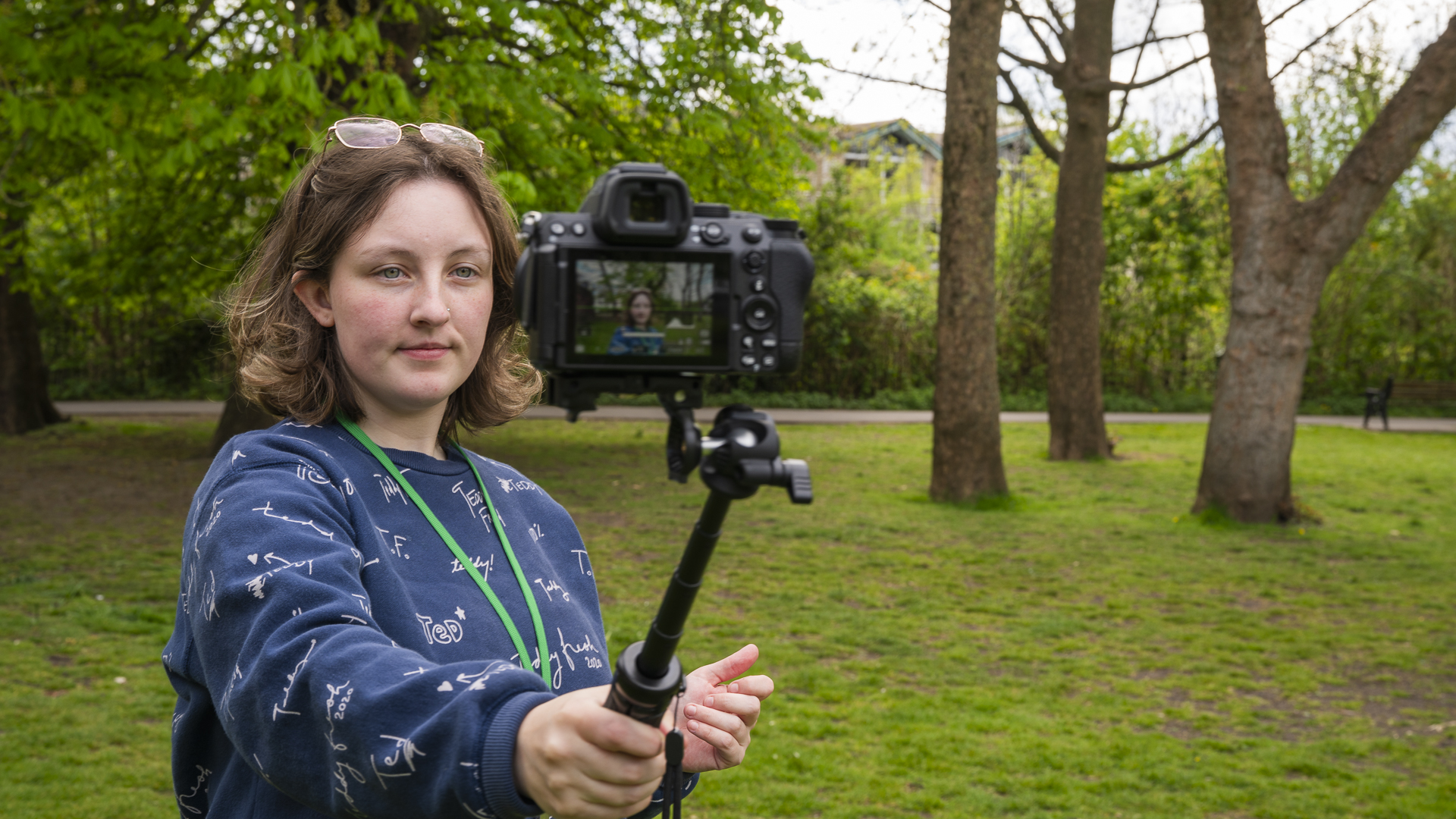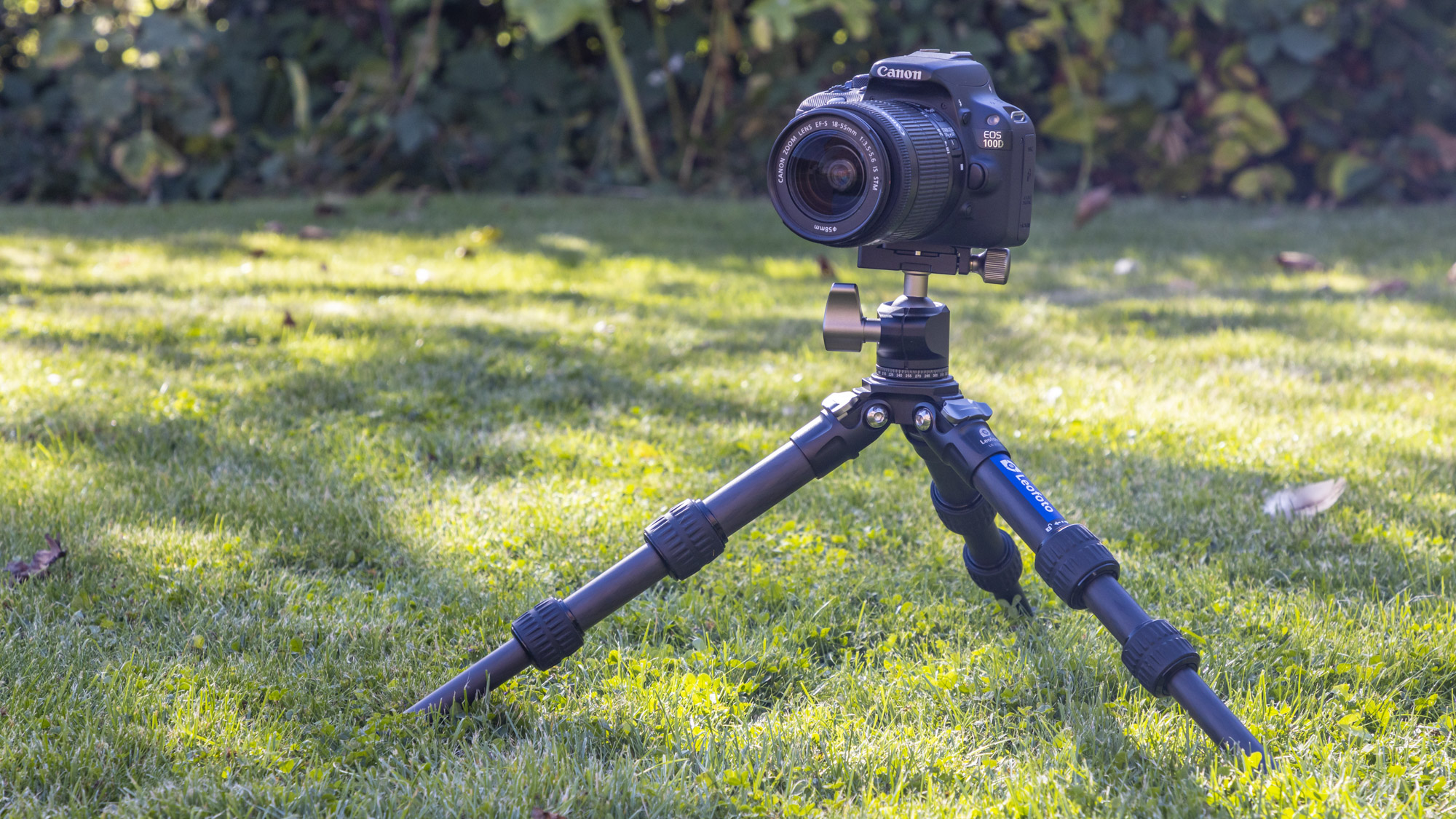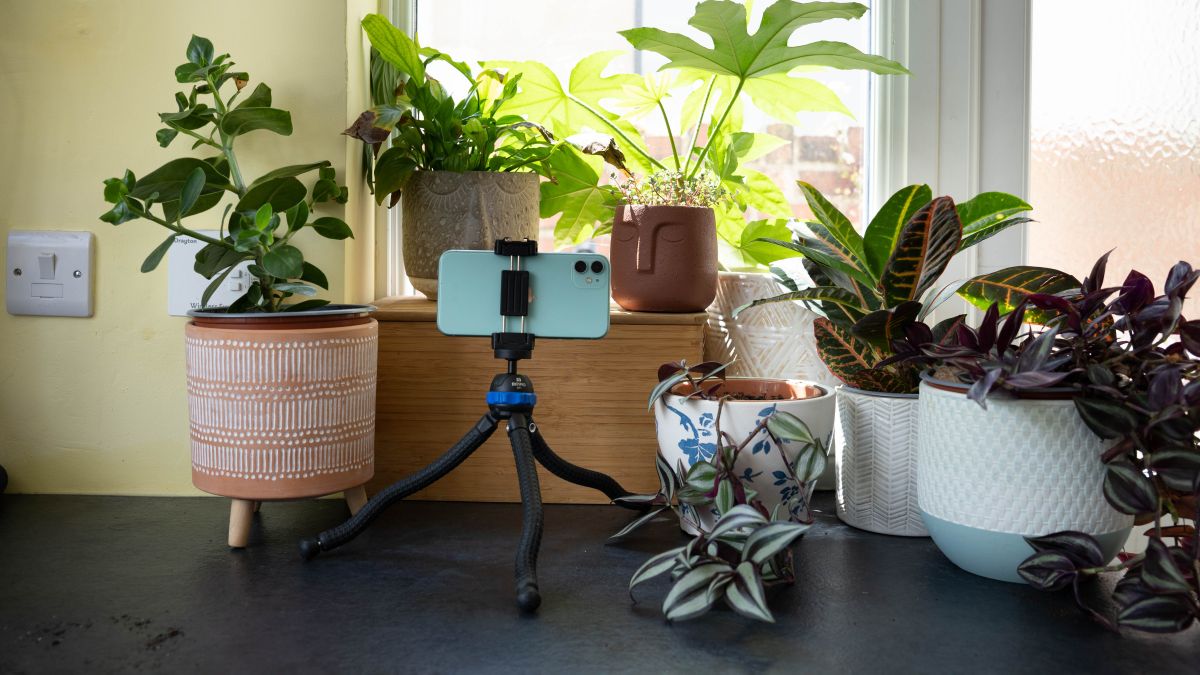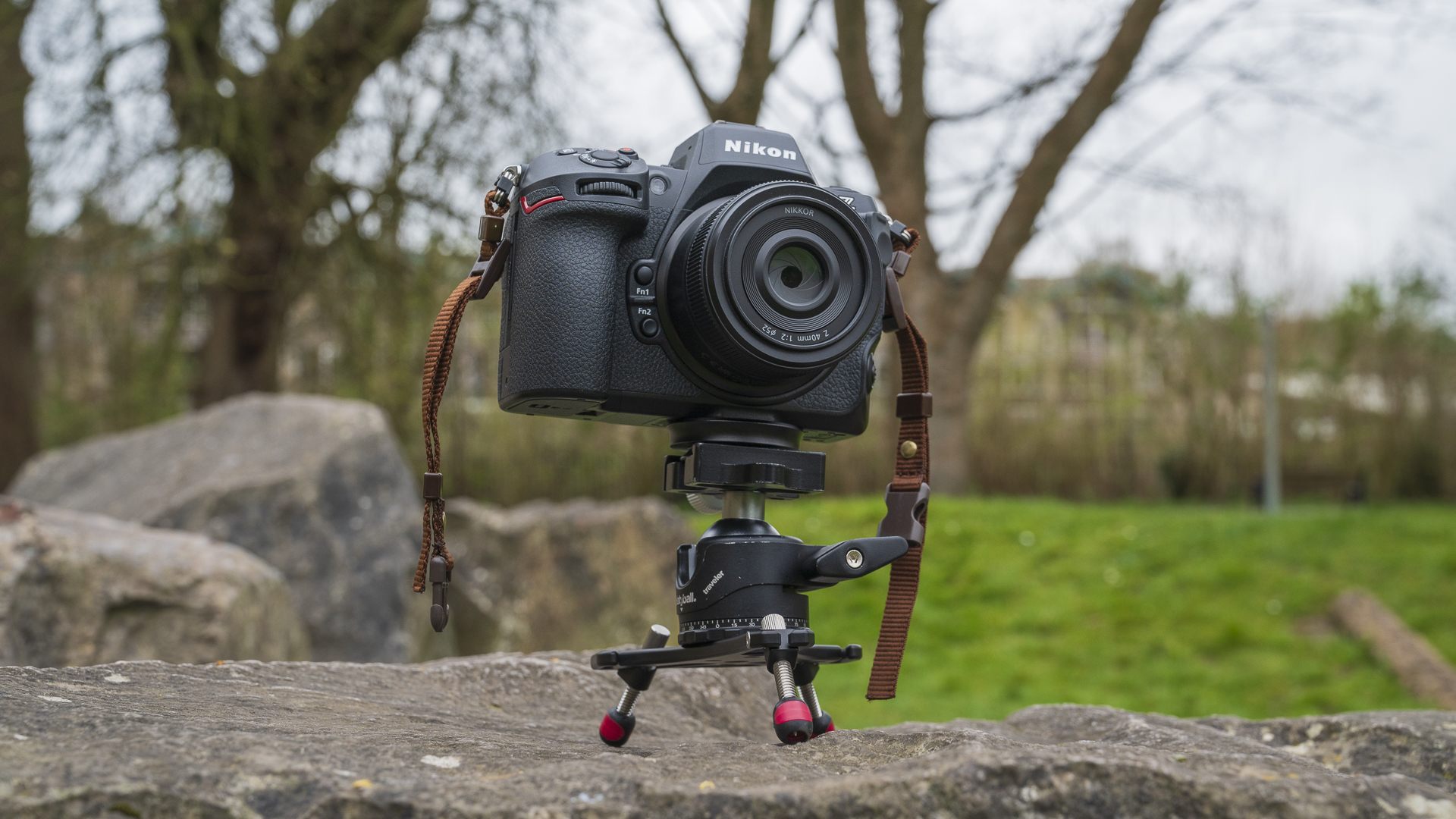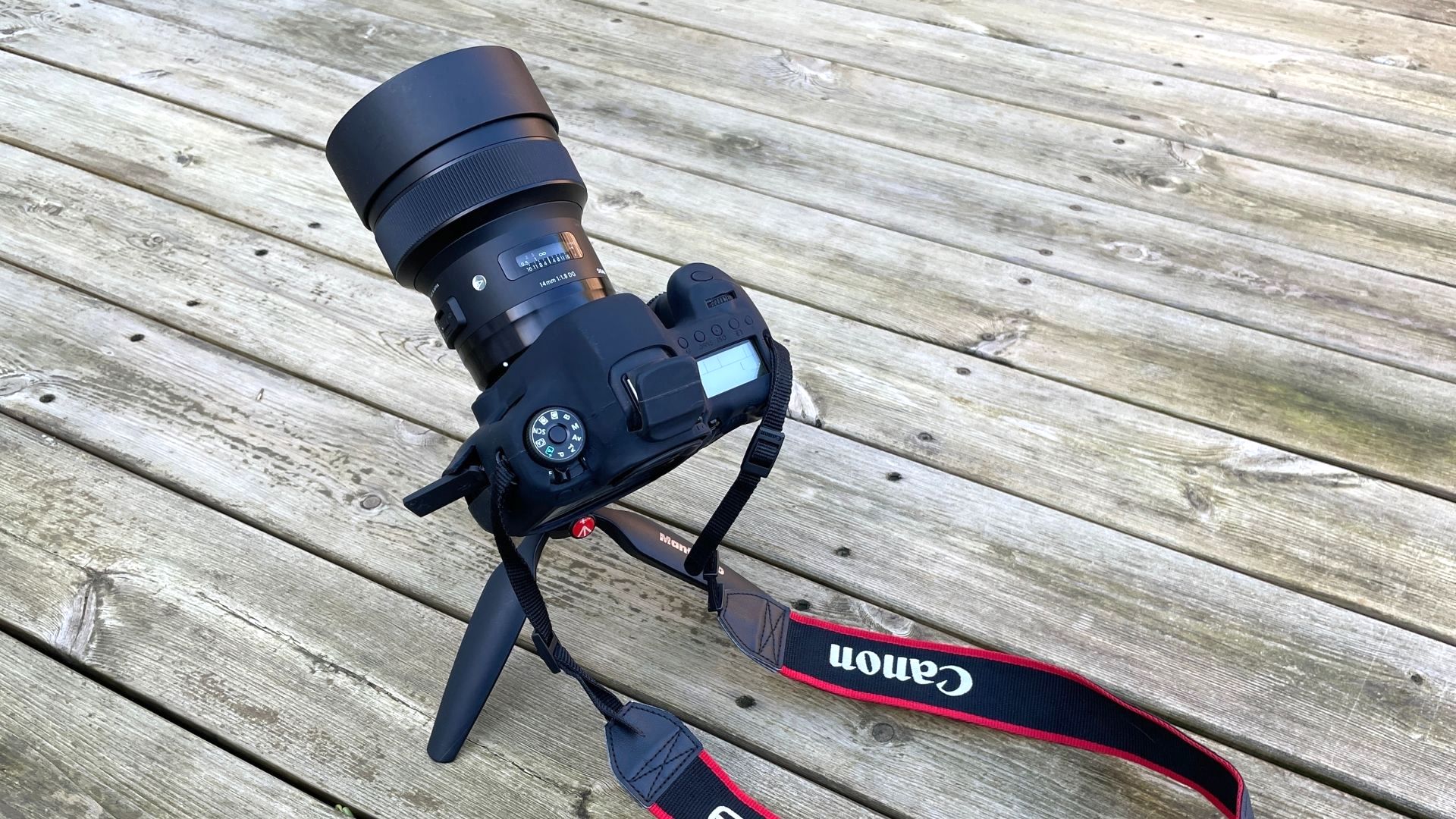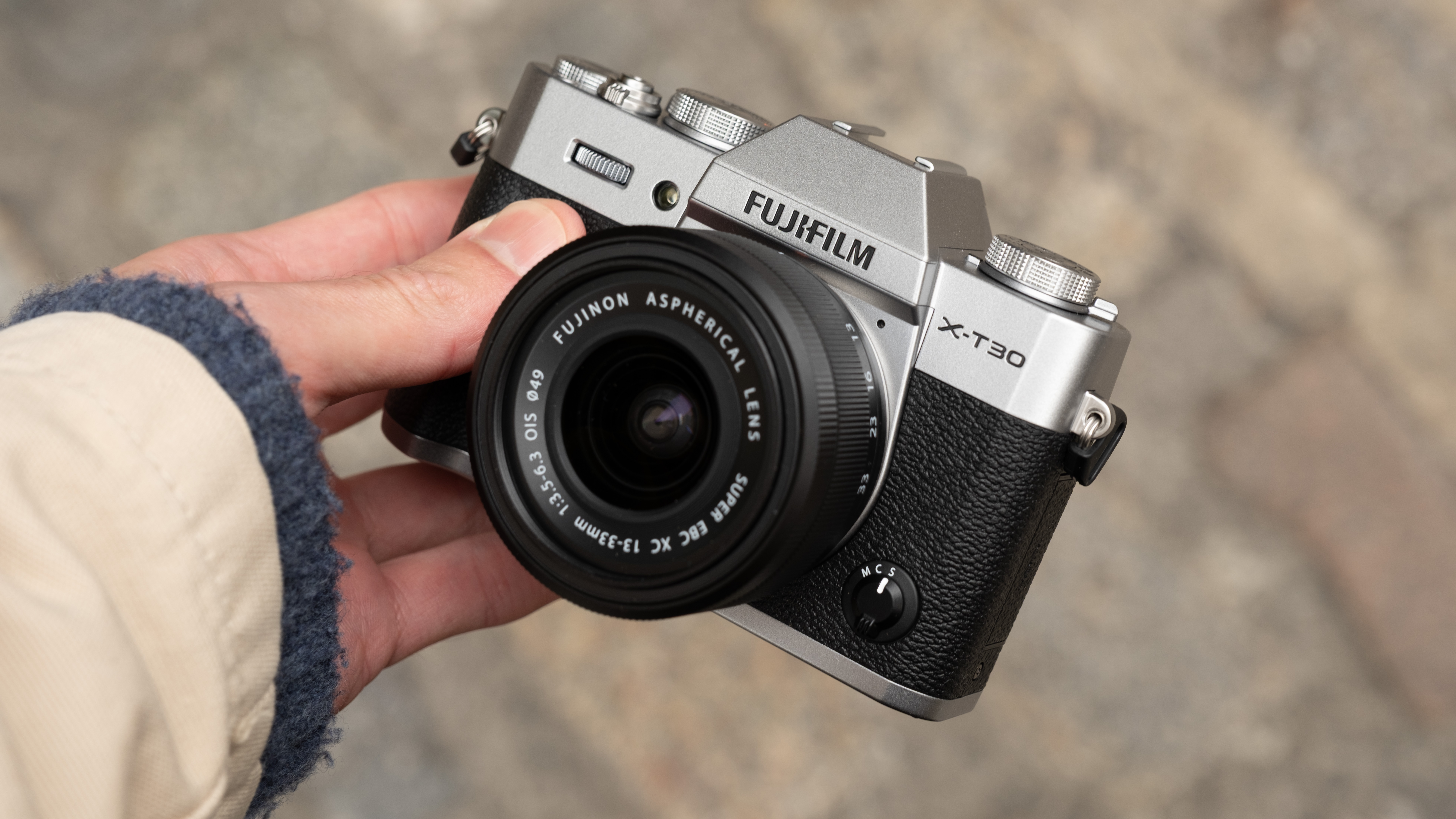The best mini tripods in 2025: tabletop supports that slip into a pocket or bag
Short on space? Here are the best mini tripods for packing into a spare corner of your kit bag

The best mini tripods aim to give you the stability of a full-size tripod, while being lighter, more compact, and easier to carry. Typically, they weigh just a few hundred grams, and you can easily slip them into a pocket or inside a camera bag. They also cost much less than full-sized tripods. But, of course, their stunted size does mean that they don't offer the shooting height of a taller tripod – hence why they are often used on a table, wall, or other sturdy raised surface. They can open up all sorts of possibilities, including long exposures, group selfies, and more. Some are multi-functional and can be converted to a handgrip or selfie stick, offering extra functionality and flexibility when you're out and about with your camera.
It's important to note that mini tripods are also only suitable for lighter camera kit – think a mirrorless with a kit lens, compact camera, or an action cam, rather than a pro-level DSLR with a monster zoom attached. But they are not just for cameras, and are also supremely useful for supporting accessories like off-camera flashguns, light panels, or microphones. Many come with clamps that can also hold a smartphone – though if that's your prime reason for buying one, see my dedicated guide to the best iPhone and smartphone tripods.
Below you'll find my pick of the best mini tripods available today, and precisely which is best for you will depend on how and what you shoot. Some have bendable legs that can cling to protruding objects or sit on uneven surfaces, others have extendable legs or an adjustable central column for extra height, and several come with a ball head for precise angles and positioning. I've noted such features in my recommendations, but for more information, I've included links to our full reviews. Let's get to it…
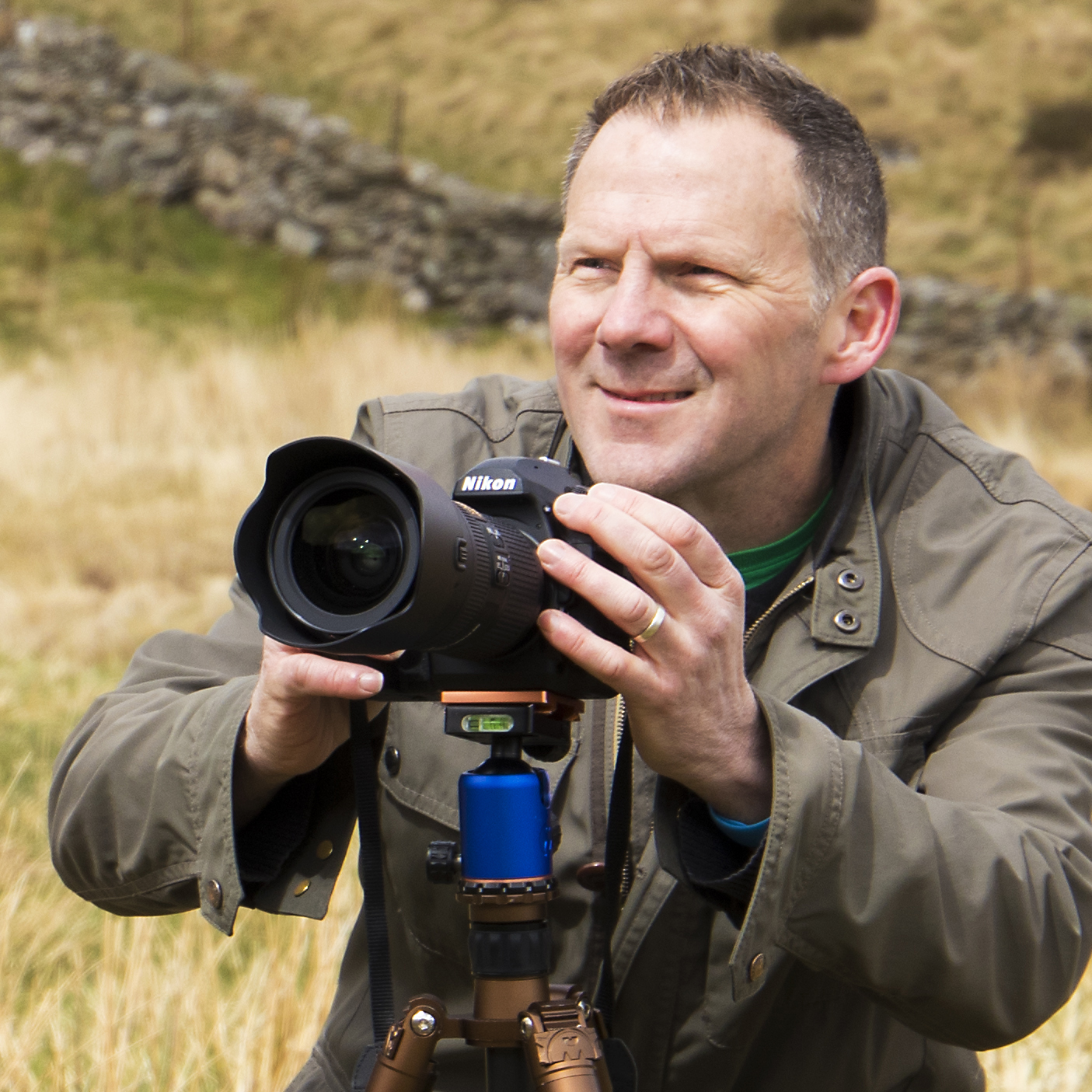
A fan of stable shooting, Digital Camera World's Guides Editor Adam never leaves the house without a three-legged friend stashed in his kit bag.
The Quick List
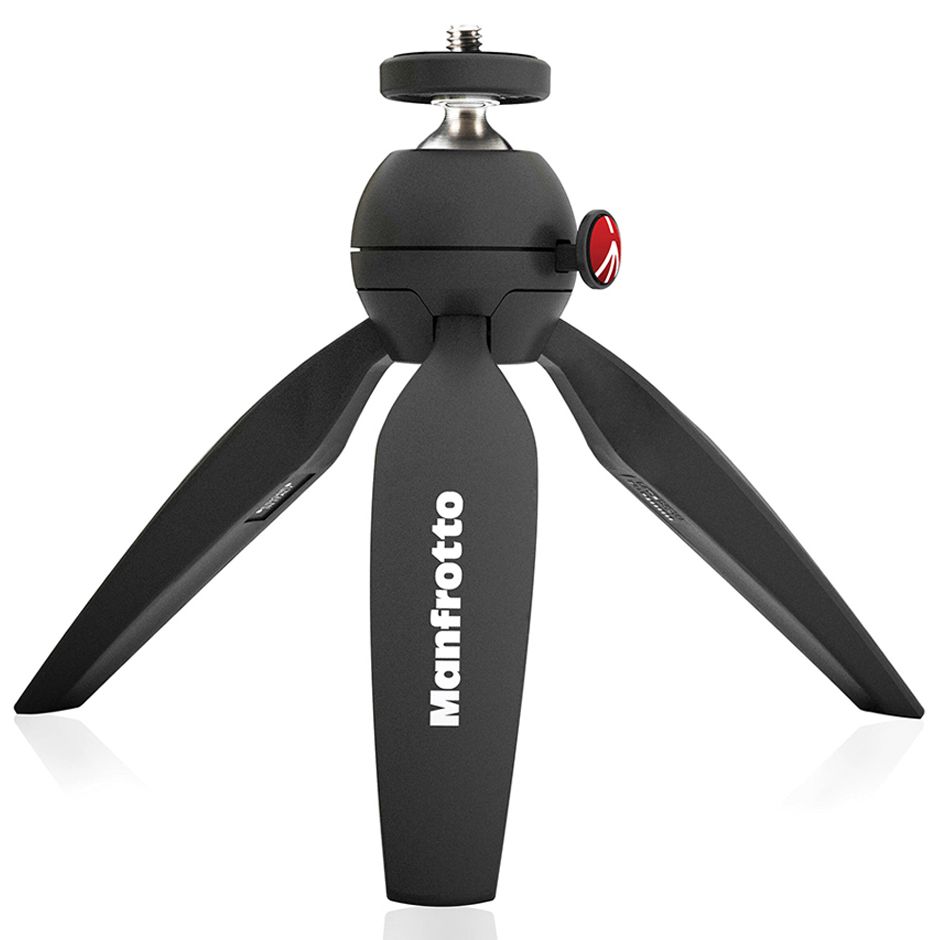
The Pixi is small enough to slip into a jacket pocket but has a premium feel and a 360° rotating ball head.
Read more below…
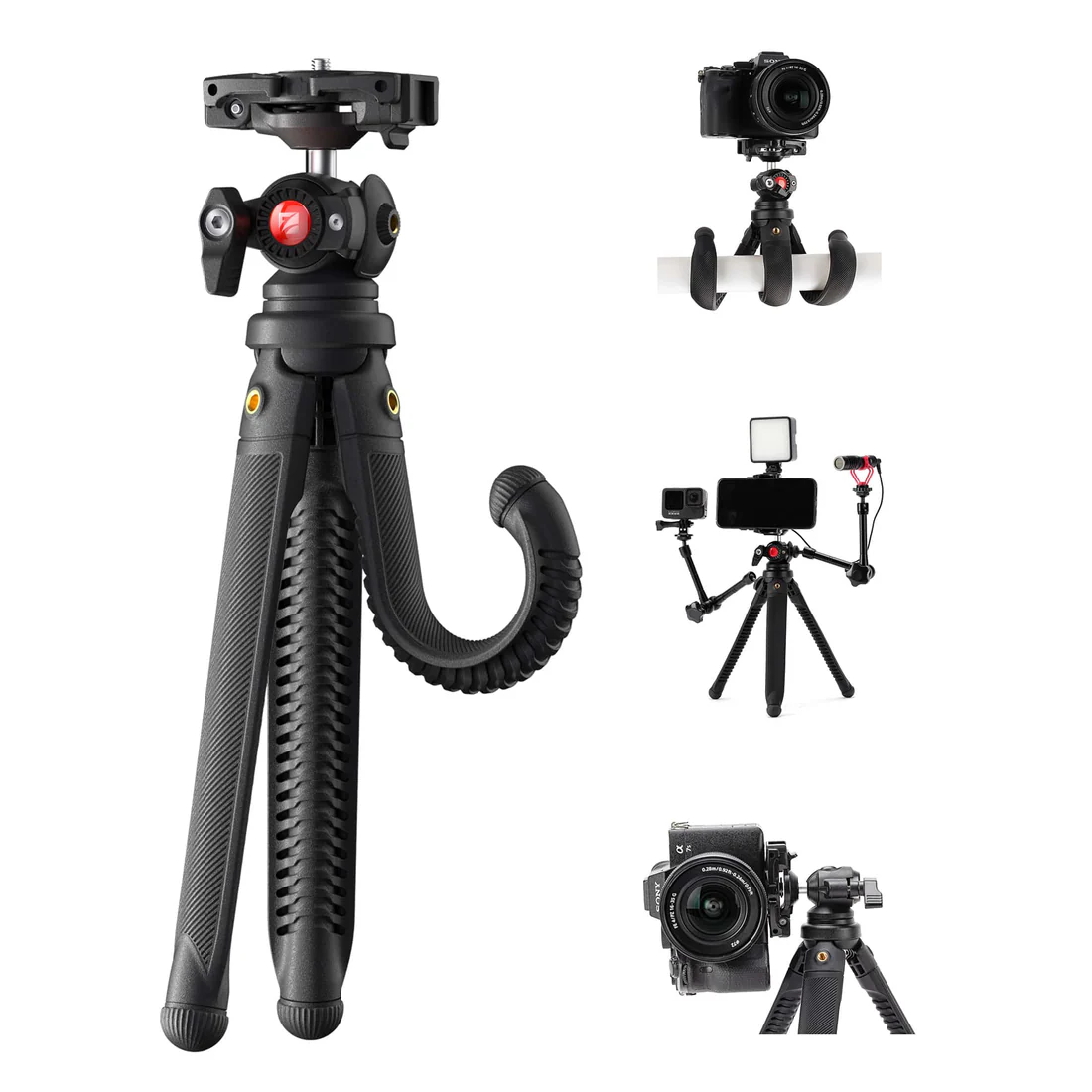
And I do mean flexible: with super-bendy yet super-strong legs, this can be wrapped around pretty much anything, enabling you to shoot from the highest of heights.
Read more below…
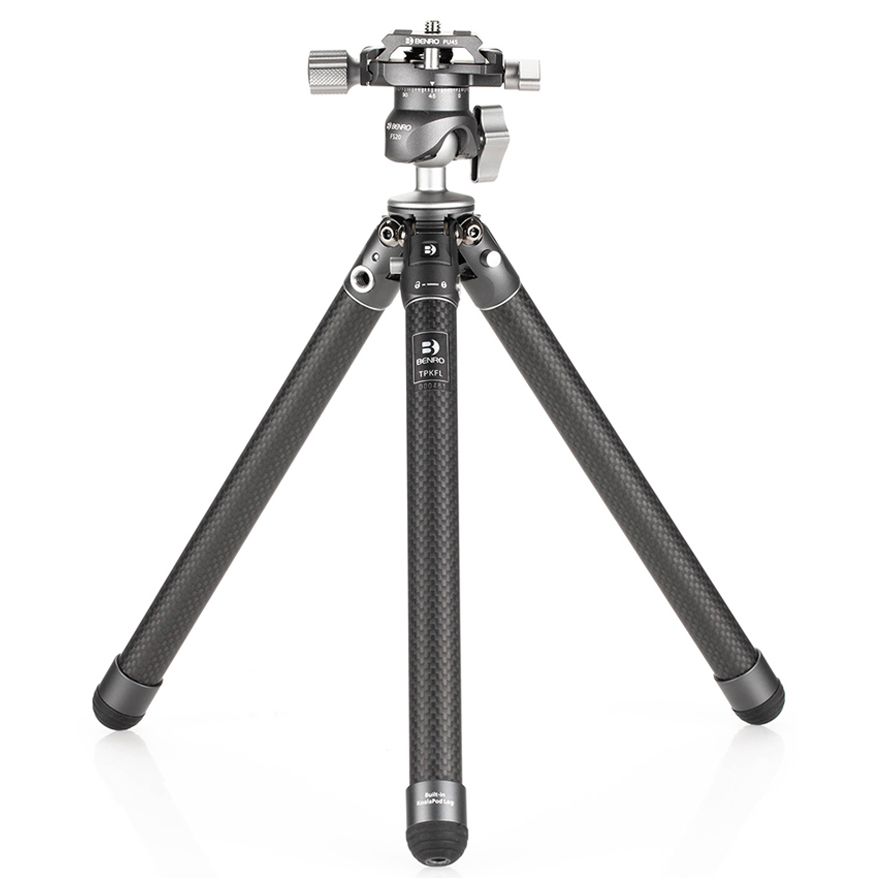
I love the completeness of this kit: a choice of solid and flexible legs, a smartphone adapter, and arms for accessories are all included, but it's pricey.
Read more below…
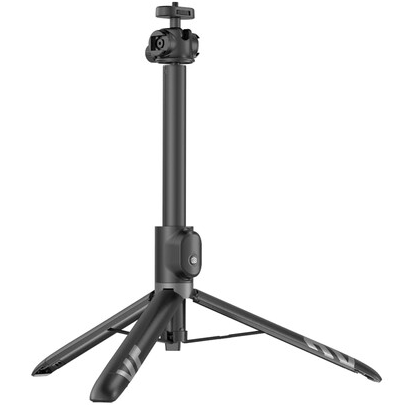
Whether you shoot with a phone, compact camera, or tablet, this tripod-cum-selfie stick has a versatile mount and attachments for lights, mics, and more.
Read more below…
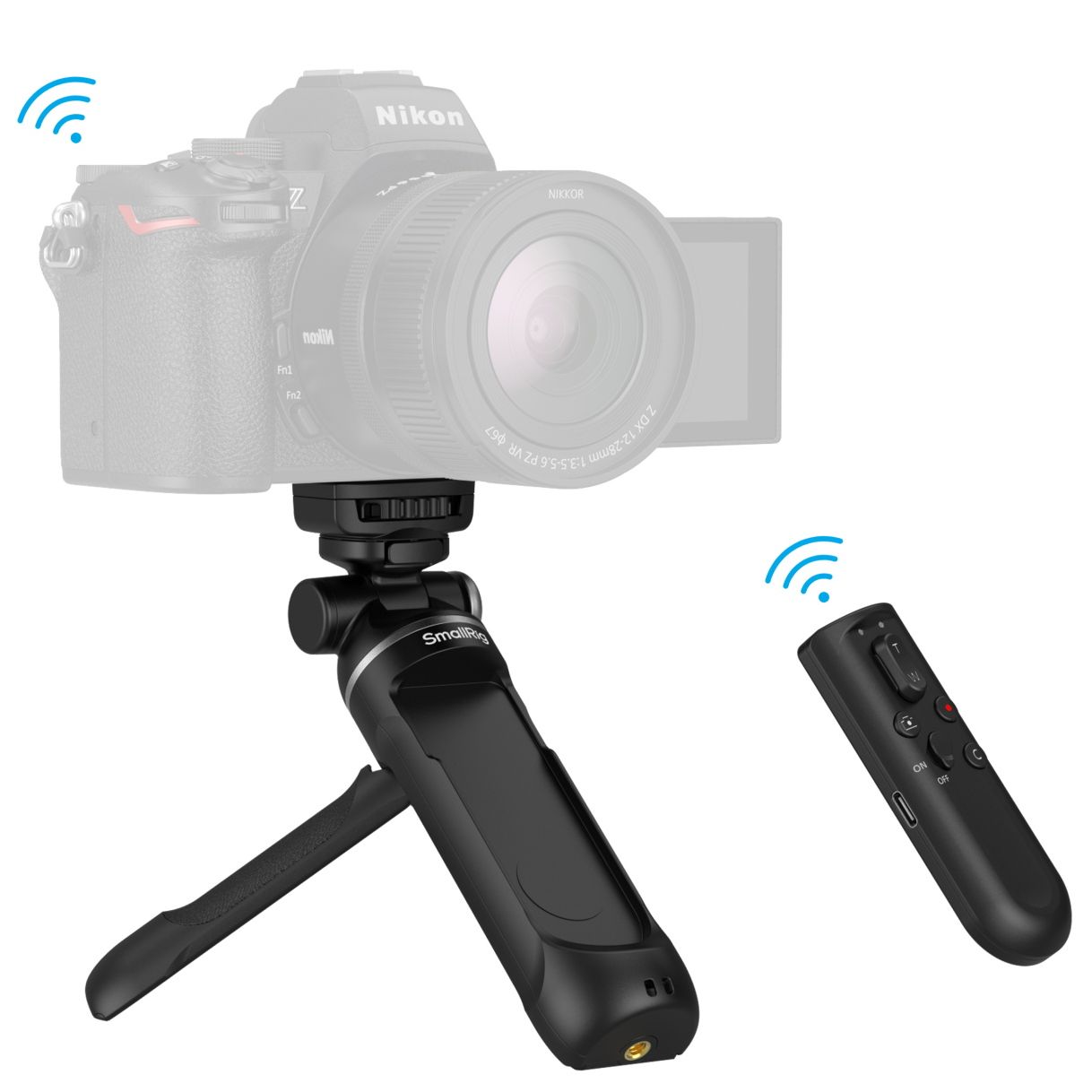
This camera grip/mini tripod/selfie stick comes complete with a fully functional remote for shooting, videoing and zooming, and is ideal for content creators.
Read more below…
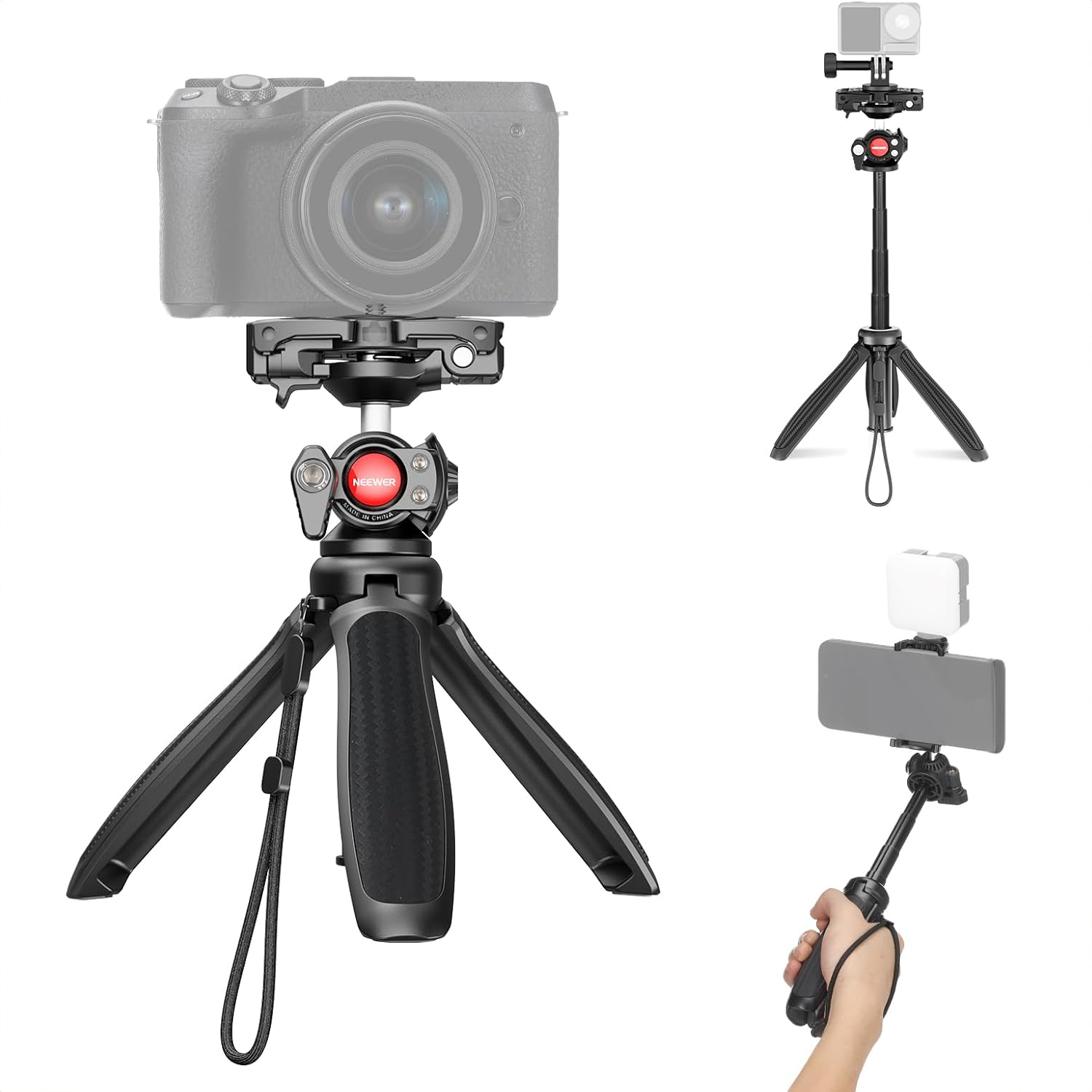
This 2-in-1 mini tripod and selfie stick is equally suitable for traditional cameras and smartphones, thanks to a clever camera plate that transforms into a phone cradle.
Read more below…
View the full list ⤵
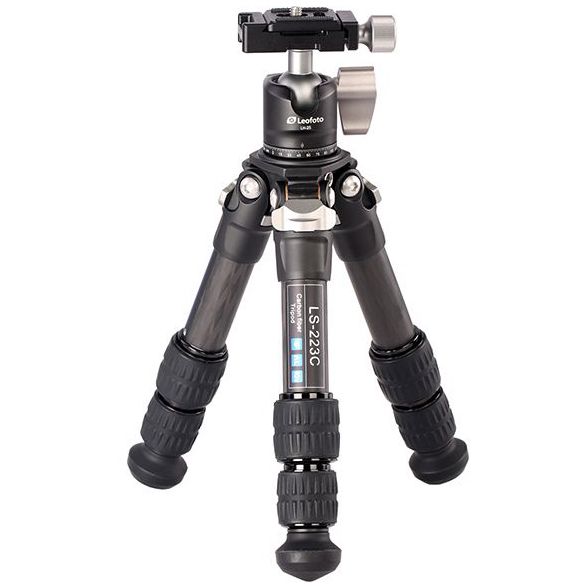
The Leofoto Ranger tucks nicely into a backpack, but can handle a load of up to 10kg. It has a pretty good reach for a compact tripod too, but is heavier than its rivals.
Read more below…
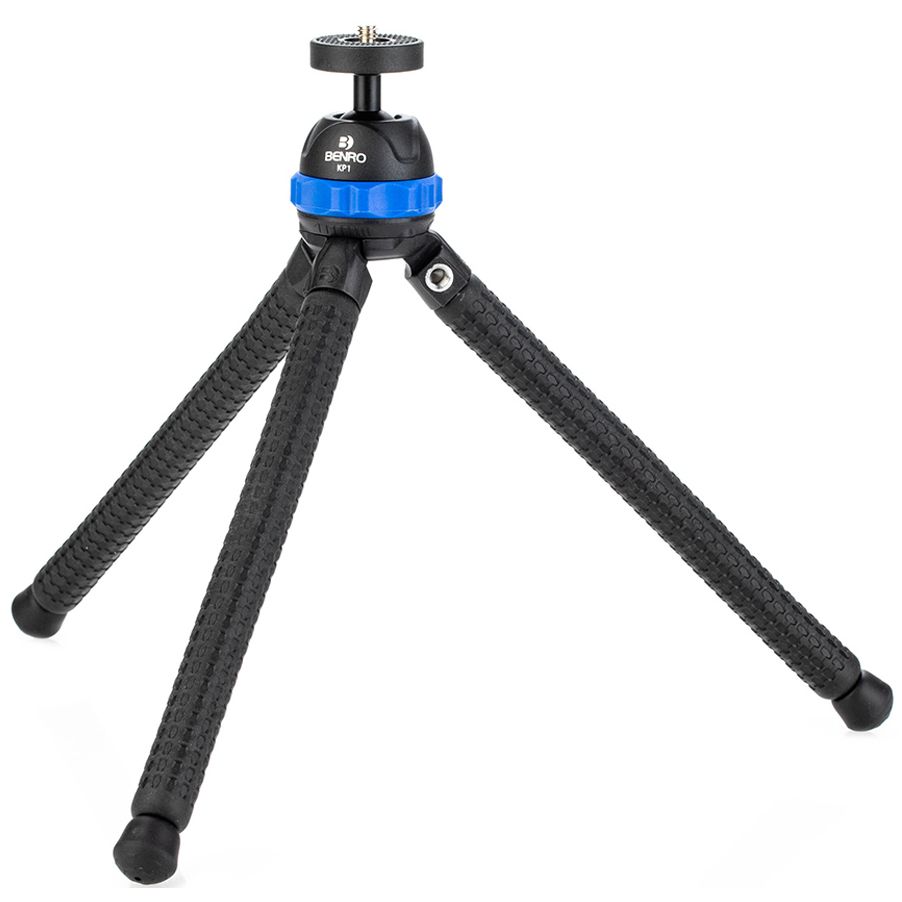
The KoalaPod’s bendy legs mean you can attach it to all sorts of surfaces or objects, making it a great option for shooting on location.
Read more below…
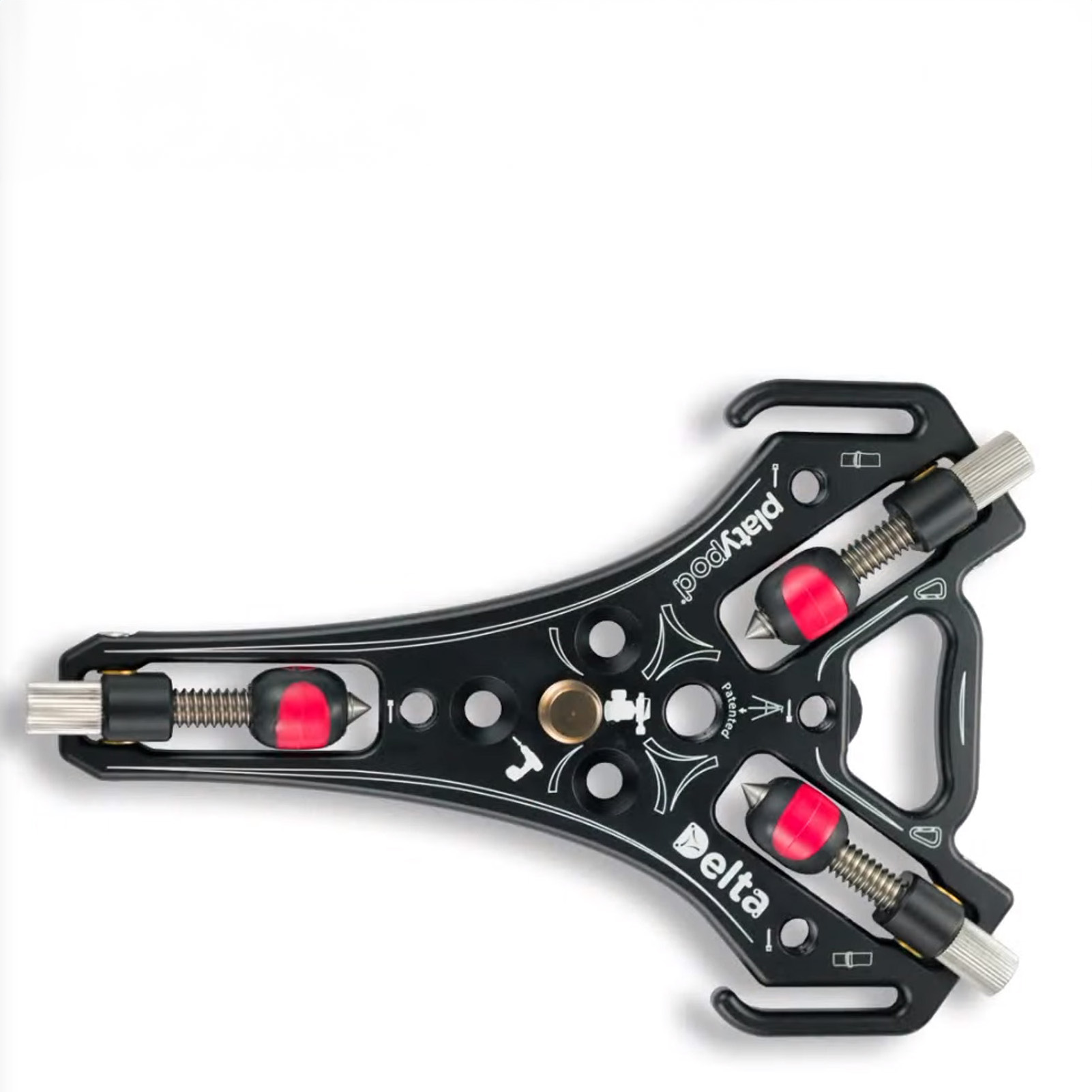
When there's not even space to set up a mini tripod, the Platypod Delta provides a stable, low-level shooting platform and slips into a spare pocket.
Read more below…
Best mini tripods
Why you can trust Digital Camera World
Best mini tripod for portability
Specifications
Reasons to buy
Reasons to avoid
Given Manfrotto's sterling reputation in the tripod market, it makes sense that the firm's mini support would also be impressive – and the Manfrotto PIXI is just that. It's a fairly standard mini tripod in many ways; small enough to slip into a jacket pocket or small bag and capable of holding up to 1kg of kit. It also adds a handy ball head into the mix with 360° of rotation and a simple push-button secure-and-release mechanism. However, it doesn't tilt up by more than 35°, making astrophotography impracticable.
I was impressed most of all by the build quality of the Manfrotto PIXI – its aluminum legs are smoothly curved in a way that just feels premium. What's more, when they close, they form a single rounded column that transforms the PIXI into a pretty serviceable camera grip, which is extra useful for video.
See our full Manfrotto PIXI mini tripod review
Most flexible mini tripod
Specifications
Reasons to buy
Reasons to avoid
The Freewell Vlogpod is a tabletop mini-tripod with flexible legs, designed to be wrapped around various objects, such as posts and branches, as well as used on flat surfaces. The secret to its flexibility is a seven-strand aluminum core inside each leg, encased in durable ABS plastic and polyamide glass fiber. This construction allows the legs to be bent into your desired shape while maintaining the rigidity needed to support a payload of up to 3kg, which is plenty for a DSLR or mirrorless with a standard or wide-angle lens.
But it's not just for cameras. Underneath the sturdy camera mount is a spring-loaded cradle that holds your phone securely. This clever convertible mount sits atop a removable ball head that offers 360-degree panning and has a cutout for vertical shooting.
I was particularly impressed with the Vlogpod's ability to hold its shape firmly, even with heavier loads. The ball head is smooth to operate and secure once locked. While the tripod lacks a center column for height extension, this is compensated for by its ability to attach to elevated objects in the environment. It's a bit too bulky to carry in a pocket, but this is a necessary trade-off for its strength and versatility, and its 456g weight and overall strength make it a good and comfortable-to-hold solution for a flexible tripod.
See our full Freewell Vlogpod review
Best premium mini tripod
Specifications
Reasons to buy
Reasons to avoid
If you're looking for a versatile tabletop tripod that isn't just confined to a tabletop, look no further than the Benro Tablepod Flex. Including a set of flexible legs inside the solid legs is ingenious, as it means you can attach it to any surface when you’re out and about. You can also configure the legs to form a monopod/selfie stick if you should need some extra reach and it comes with a mobile phone adapter so it can be used with either a smartphone, compact camera, or small mirrorless.
If you often use accessories such as a light or a mic, you'll be pleased to hear it comes with two accessory arms so you can attach different devices easily. It's a little on the expensive side for a tabletop tripod. But considering all the well-thought-out features, it's worth spending a bit more.
See our full Benro TablePod Flex Kit review
Best tall mini tripod
Specifications
Reasons to buy
Reasons to avoid
The KraftGeek Variety Tripod is a highly adaptable accessory designed specifically for content creators, including vloggers, influencers, and TikTokers. It seamlessly transitions between a selfie stick, a tabletop tripod, and a full-sized tripod. Made primarily of aluminum, the tripod is relatively lightweight at just 450g and can support a maximum load of 2kg, making it well-suited for smartphones and smaller cameras.
A key feature is its impressive maximum height, which extends to 62.5 inches (158cm), and is super useful for creating professional 'to-camera' video presentations. Multiple cold shoe mounts enable easy attachment of accessories, such as microphones and LED lights. It comes with a flexible ball head for cameras and a rotating universal cradle for smartphones, offering compatibility with a wide array of devices.
While the tripod's extended height is a significant advantage, this comes at the cost of compactness when it's collapsed. It is not as portable as smaller, pocket-sized tripods. However, this tradeoff is well worth it, as the Variety Tripod provides a solid and stable platform and is a compelling and affordable choice for photographers who need a versatile and robust support system for their content creation needs.
See our full KraftGeek Variety Tripod review
Best mini tripod with remote
Specifications
Reasons to buy
Reasons to avoid
The SmallRig SR-RG2 Multifunctional Wireless Shooting Grip is a handheld grip, selfie stick, and tabletop tripod that features a detachable Bluetooth remote control that not only fires your camera's shutter but can zoom in and out with compatible lenses and activate other programmable camera functions too.
While the center column is extendable for use as a selfie stick, it does not extend particularly far and cannot be extended when used in tripod mode, so the shooting height is not adjustable in this case.
The SmallRig SR-RG2 is a convenient, multifunctional support for photographers and videographers, and I was particularly impressed with its wireless remote's functionality, which offers far more control and flexibility than many dedicated remote shutter releases.
See our full SmallRig SR-RG2 review
Best mini tripod for taking selfies
Specifications
Reasons to buy
Reasons to avoid
The Neewer TP38 is a two-in-one desktop mini-tripod and selfie stick that is designed to support both cameras and smartphones. It features a clever and versatile camera plate and phone cradle, which eliminates the need for separate attachments and makes it suitable for photographers frequently switching between using a phone and a dedicated camera.
The robust build quality feels more durable compared to some other tabletop tripod/selfie stick combinations, and the head is well-engineered, supporting a decent load rating. However, the device only offers a limited degree of extension via its non-locking telescopic center column.
I was impressed with the Neewer TP38's compact design and its usefulness in various shooting situations, including vlogging, live streaming, and general photography. It is a portable and practical solution for photographers and content creators who require a flexible support system and who switch between a traditional camera and a smartphone.
See our full Neewer TP38 review
Best mini tripod for heavy payloads
Specifications
Reasons to buy
Reasons to avoid
Able to hold as much as 10kg in weight, the Leofoto Ranger LS-223C can hold its own alongside many larger tripods. That's more than enough to hold a mirrorless setup or mid-sized DSLR, giving you real versatility from a tripod that slips easily into the bottom of a backpack.
It's pleasingly sturdy, with three leg sections, and has plenty of scope for precise angle adjustments. Its maximum height is about 12in (30cm), which is pretty good for a tabletop tripod, and is usually sold with a 360º ballhead. In my tests, I found it a great option for low-level shots of landscapes – and loved that it was much lighter than my usual travel tripod when stashed in my backpack.
However, in comparison to other tabletop models, the main drawback is its weight. It's significantly heavier than other tripods on this list, and arguably heavier than a tabletop tripod should be. However, if you want a sturdy mini tripod that can take a heavy camera set-up, this is a great option.
See our full Leofoto Ranger LS-223C review
Best mini tripod for on-the-go content creators
Specifications
Reasons to buy
Reasons to avoid
If you're an on-the-go content creator, travel blogger or even a fitness coach, I can see the advantages of the KoalaPod: what you can wrap its flexible legs around is pretty much limitless. You can, of course, use it as a standard tabletop tripod, or as a small selfie stick for those moments when you want just a little more background than you can achieve with your arm's length.
Despite its bendy legs, it feels more secure than you might imagine. However, I wouldn't trust it to take the weight of my Sony A7 III with a lens attached, even though it's rated as able to take such a weight. But for smaller-bodied cameras with lightweight lenses, it's perfect.
See our full Benro KoalaPod review
Best tripod alternative
Specifications
Reasons to buy
Reasons to avoid
The Platypod Delta is a mini-tripod alternative for situations where traditional tripods are not practical or permitted. It is essentially a flat, triangular sheet of aluminum alloy with retractable legs, offering a stable base for low-level photography.
At just 6mm thin, it is supremely portable, and easily slips into a pocket or can hang off a camera bag with its supplied carabiner. It only takes seconds to flip out its legs and can support a beefy 10kg load rating. A supplied strap enables it to be attached to posts or trees, and there's even a bottle opener stamped in. However, you will need to use it with a ball head, which does take away from the 'packs flat' aesthetic somewhat, and you can't adjust the shooting height.
The Platypod Delta isn't a replacement for a traditional tripod, but is invaluable for photographers facing situations where traditional tripods are not feasible, offering a practical solution for low-angle shots.
See our full Platypod Delta review
How to choose the best mini tripod
What is a mini tripod?
A mini tripod is a small and portable camera support system with adjustable legs. Like any tripod, it's designed to provide stability and support for cameras and other equipment. The main difference is that it's compact and lightweight, making it easy to store and carry. Mini tripods are also usually cheaper than a full-sized tripod.
Will a mini tripod fit my camera?
Mini tripods can typically support a range of cameras, including DSLRs, mirrorless cameras, compact cameras, action cameras, and smartphones. However, they are typically designed for smaller, lighter cameras. Some may support heavier equipment, but it's essential to check the tripod's weight capacity before buying, to ensure it can handle your gear.
If you're using a smartphone, you'll probably be fine with pretty much any mini tripod, but if you're using a light DSLR, mirrorless, or compact camera, you'll need to be sure it can take the weight. (And remember: that's the weight of the camera and lens combined.) I've specified the maximum payload capacity of every mini tripod on the list above to help you keep track.
Every mini tripod on my list is capable of supporting an action camera or camera phone (though a phone may require an additional clamp to secure it to the tripod), and some are capable of supporting much heavier payloads than that. The heftiest models can take a full-frame DSLR with lens attached.
How we test mini tripods
When we review mini tripods, we look at build quality, portability and vital specs, such as payload capacity. We take the mini tripods out into real-world conditions to assess how they perform in the field with both camera and smartphone setups. We look at the headline features and manufacturers' claims for a mini tripod, and test out how well they work in reality. We use our findings to inform our comments in product reviews and buying guides.
Find out more about how we test and review on Digital Camera World
The best camera deals, reviews, product advice, and unmissable photography news, direct to your inbox!

Prior to joining digitalcameraworld.com as Guides Editor, Adam was the editor of N-Photo: The Nikon Magazine for seven years, and as such is one of Digital Camera World's leading experts when it comes to all things Nikon-related.
Whether it’s reviews and hands-on tests of the latest Nikon cameras and lenses, sharing his skills using filters, tripods, lighting, L brackets and other photography equipment, or trading tips and techniques on shooting landscapes, wildlife and almost any genre of photography, Adam is always on hand to provide his insights.
Prior to his tenure on N-Photo, Adam was also a veteran of publications such as PhotoPlus: The Canon Magazine, so his wealth of photographic knowledge isn’t solely limited to the Big N.
